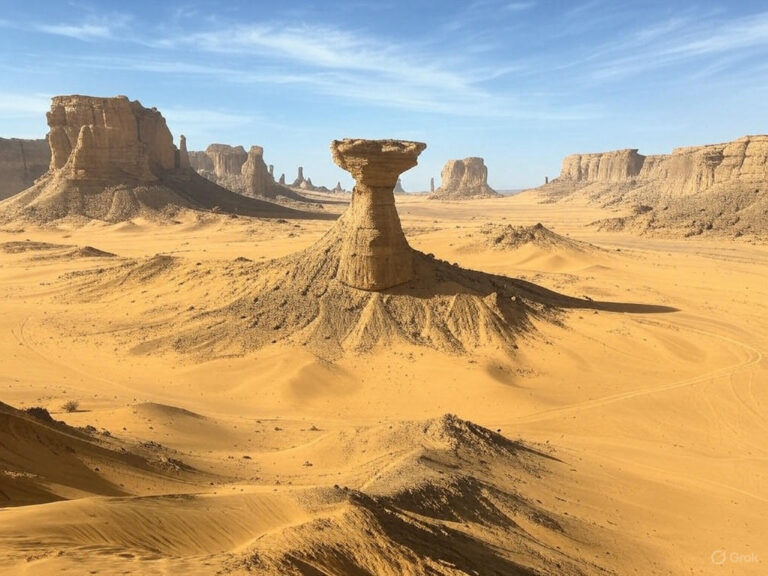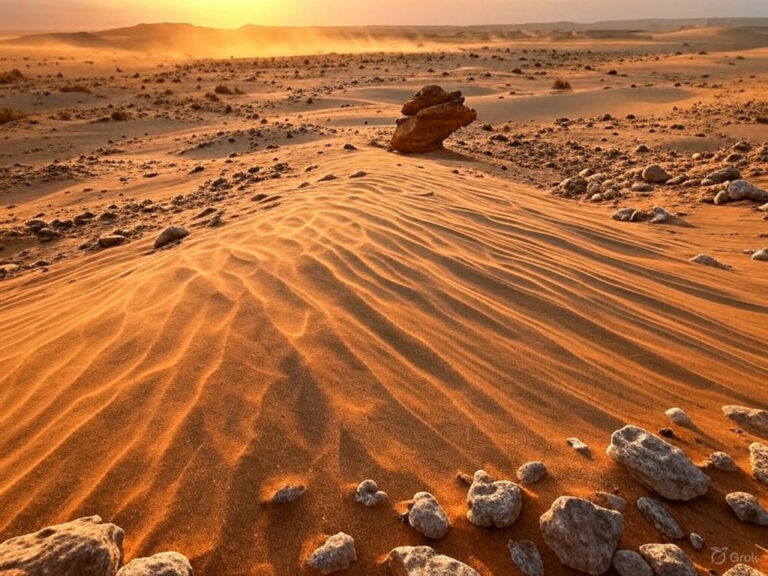Antarctica
Let’s understand Antarctica, not just as a continent but as an extreme geographic entity — the coldest, driest, windiest, and highest continent on Earth. Though it seems silent and frozen, it is a crucial piece in the global geographic and climatic puzzle.

Area and General Description
- Size: Antarctica spans around 5.1 million square kilometers, making it the fifth largest continent.
- Now, the key point here is not just its size — but the fact that almost 98% of it is covered in ice. This is not seasonal snow; this is a permanent ice cap, kilometers thick in places.
- Think of it like this: if you remove the ice, the shape and elevation of the continent would look completely different — this is called the subglacial topography.
Location and Extent
- Antarctica lies within the Antarctic Circle, i.e., south of 66°33′ South latitude.
- Importantly, it includes the South Pole — the southernmost point on Earth.
- This location leads to extreme sunlight patterns — six months of day and six months of night — which we’ll discuss under seasons.
Sovereignty and Governance
- Very interestingly — there is no country in Antarctica.
- However, seven countries have made territorial claims on different portions of the continent:
- 🇦🇷 Argentina
- 🇦🇺 Australia
- 🇨🇱 Chile
- 🇫🇷 France
- 🇳🇿 New Zealand
- 🇳🇴 Norway
- 🇬🇧 United Kingdom
These claims often overlap, but here’s the catch — none of them are officially recognized under international law because of the Antarctic Treaty.
Antarctic Treaty System (ATS)
- Signed in 1959, came into force in 1961, starting with 12 countries. Today, 56 countries are members.
Key Provisions of the Antarctic Treaty:
- ✅ Peaceful Use Only: The continent can only be used for peaceful purposes. No military activities are allowed.
- ✅ Scientific Freedom: Freedom of scientific investigation is protected and promoted.
- ✅ Open Sharing of Research: All scientific findings must be shared publicly and freely.
📌 Significance: This treaty has kept Antarctica free from geopolitical conflicts, military installations, and commercial exploitation for over six decades.
Seasons and Sunlight
- Antarctica has two broad seasons:
- Summer: Almost six months of continuous daylight (known as Polar Day).
- Winter: Around six months of continuous darkness (known as Polar Night).
This is because of Earth’s axial tilt, and it’s more extreme here than anywhere else due to the continent’s polar location.
Climate: Harsh and Unforgiving
- Average Temperature: –34.4°C
- Hottest Ever Recorded: 15°C (which is rare and considered a climatic anomaly)
- Classified as a Polar Desert — yes, you heard that right — a desert. Why?
- Because it receives very little precipitation, most of it in the form of snow.
- The air is so cold that it holds very little moisture, resulting in minimal snowfall.
Terrain and Ice Features
- Terrain mainly consists of:
- Glaciers (slow-moving ice rivers)
- Ice Shelves (floating extensions of glaciers into the sea)
- Icebergs (large chunks broken off from glaciers or shelves)
🧊 The snow that falls rarely melts. Over centuries, it compacts into ice sheets, some several kilometers thick — forming the Continental Ice Sheets.
Continental Ice Sheets: A Water Vault
- Antarctica holds a staggering 29 million cubic kilometers of ice.
- That’s over 90% of the world’s ice!
- And more than 75% of global freshwater is locked here.
Imagine the impact on global sea level if even a fraction of this ice melts — and that’s why Antarctica is central to climate change discussions.
Flora and Fauna
Despite its icy grip, life finds a way:
Flora (simple plant life):
- Lichens, Mosses, Liverworts, Algae
(They survive in pockets where slightly warmer temperatures and meltwater are available in summer.)
Fauna (animal life):
- Mostly limited to marine mammals and birds like:
- Seals
- Penguins (especially Emperor and Adelie species)
There are no trees or bushes, due to the permafrost and lack of suitable soil.
Highest Point
- Vinson Massif (Elevation: 4,897 meters) in the Sentinel Range, located in Western Antarctica.
This is the tallest peak on the continent, often scaled by extreme-condition mountaineers.
Major Glaciers
- Lambert Glacier – World’s largest glacier
- Byrd Glacier
- Mulock Glacier
These are vital not only for glaciology but also as indicators of climate change, because their flow rate, thickness, and melting trends are closely monitored by scientists.
Division of Antarctica
The continent is divided physically and geologically into two parts:
| Region | Characteristics |
| East Antarctica | A high, stable ice-covered plateau, older and more stable. |
| West Antarctica | Made up of an ice sheet over a mountainous archipelago (island-like) |
This division also aligns with tectonic and climatic distinctions, and West Antarctica is considered more vulnerable to melting.
🧭 Conclusion
So, Antarctica is not just a frozen wasteland — it’s a climatic laboratory, a geopolitical experiment, and a freshwater reserve rolled into one.





3 Comments